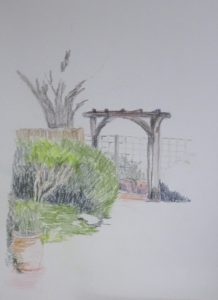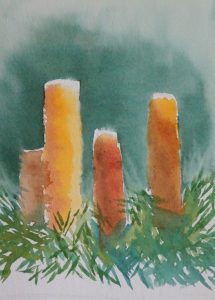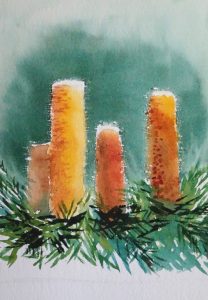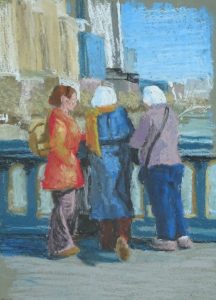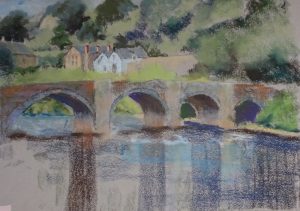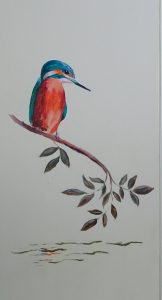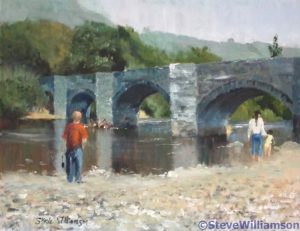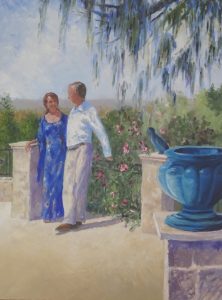The discontent is not the current Solitude. It concerns the rediscovery of a Layflat Sketch Pad I bought a month or two after the publication of my book “The Bridges of Dee”, when I was feeling artistically rudderless. I had been painting the bridges pictured therein for some years, a very strong focus, and now I had none. Being somewhat circumscribed by caring responsibilities, I couldn’t go as far as thought might take me (my other river, the Tyne? more bridges? Chester?).
Inspired by a article in either “The Artist” or “Leisure Painter”, I decided to make a painterly record of the garden. The advantage of the layflat layout is that you can paint/draw across the fold so a painting could grow sideways if necessary, and gardens do grow. Unfortunately I hit a “only painting rubbish” phase and was inhibited by the acres of white paper, and the idea of a rubbish painting trapped in a book! I’m no better off now either. As soon as I saw it, the old doubts reappeared, even though my paintings, currently, are not rubbish.
What to do? Displacement activity required. How about starting with the title page – it is a book, after all? What do I call it? The Garden, My Garden, Garden, Gardening Notes, Flowers in my Garden, Heaven on Earth? (eek! I say,steady on). And what font? and where to put the title? Up high on the page with wisteria drooping from it? In the middle surrounded by a wreath of summer flowers? Bottom right, alone?
Some decisions have been made, title – My Garden; font – my own handwriting, which isn’t neat but probably has a closer affinity to the garden than a more formal font. I’m not an accomplished flower painter, so although I’m attracted to the wisteria idea (the crossbar of the pergola would be a good place to sign) I’m a lot nervous about launching into flowers on page one. Come on, Steve! You’ve got to start somewhere!
Because I don’t like a post without a picture, I’ve included one from the book. It’s the Old Dee Bridge on a misty morning.
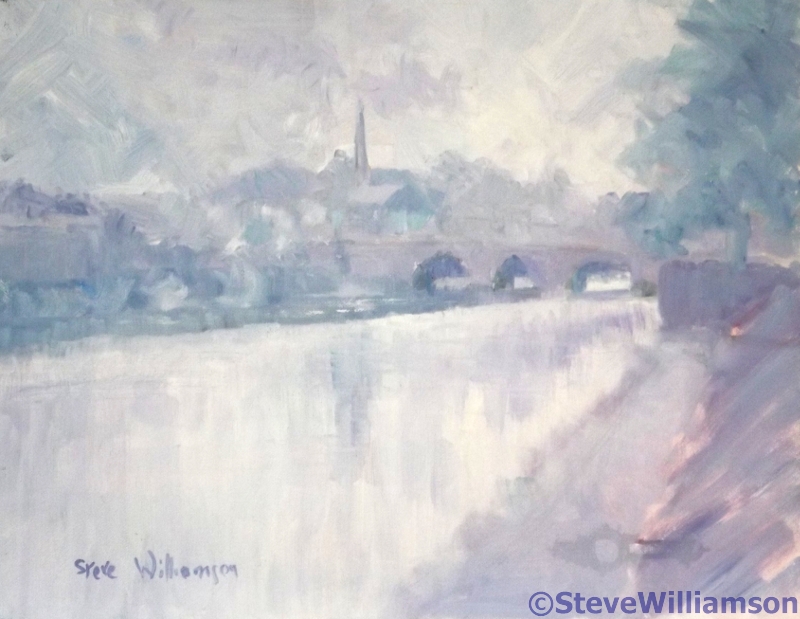
 First, I continued the garden on the right hand side in watercolour pencil. The deep shadow at the foot of the arch anchored it to the earth while the flowering bush was a welcome contrast to the very green border on the other side. The absence of any distance beyond the trellis fence emphasises that this is my garden, with only the oak as a borrowed landscape.
First, I continued the garden on the right hand side in watercolour pencil. The deep shadow at the foot of the arch anchored it to the earth while the flowering bush was a welcome contrast to the very green border on the other side. The absence of any distance beyond the trellis fence emphasises that this is my garden, with only the oak as a borrowed landscape.
